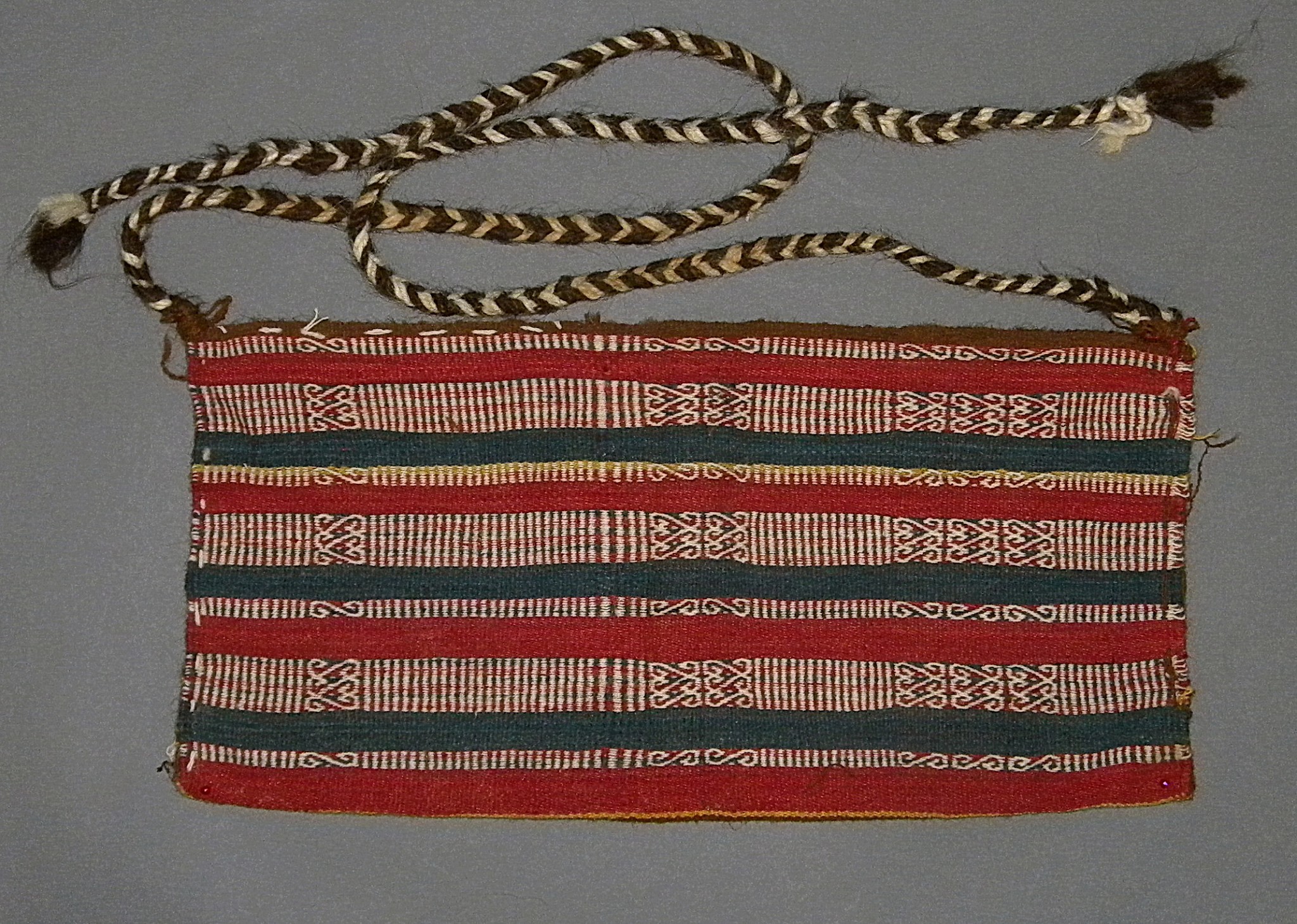


Chile, Inca Faja Bolsa (Bag Belt)
This Faja Bolsa has extremely good colors and presevation, in blue, red and white. geometric striped design. The belt was worn around the waist and over a tunic. As tunics have not pockets, the bag belt allowed the wearer to store items from coca leaves to corn, something like a Money Belt is used for today. A similar example is found in "Arica, Diez mil Anos", Museo Chileno de Arte Precolombino, page 80, no. 180 & 181. Woven of alpaca wools. Weavings from Pica, Chile are usually in excellent condition with bright colors.
Period: Chile, Inca Pica, circa AD1470-1535
Media: Textile
Dimensions: Width: 6 x Length:. 17 � in.
$2,750
90247





Chile, Pre-Inca helmet from Chile with Extended Cross Design
A coiled and reed cone shaped helmet and decorated with crosses within squares in alternating colors of blue and salmon with a blue lower border. A similar helmet is illustrated in IDENTITY AND PRESTIGE IN THE ANDES pg.44. The Andean civilizations never developed a piercing technology but utilized a clobbering warfare and needed insulated
Period: Chile, Tiwanaku, Alta Ramirez Arica, circa AD450-800
Media: Textile
Dimensions: Height 11" Diam 9"
Price Upon Request
91131
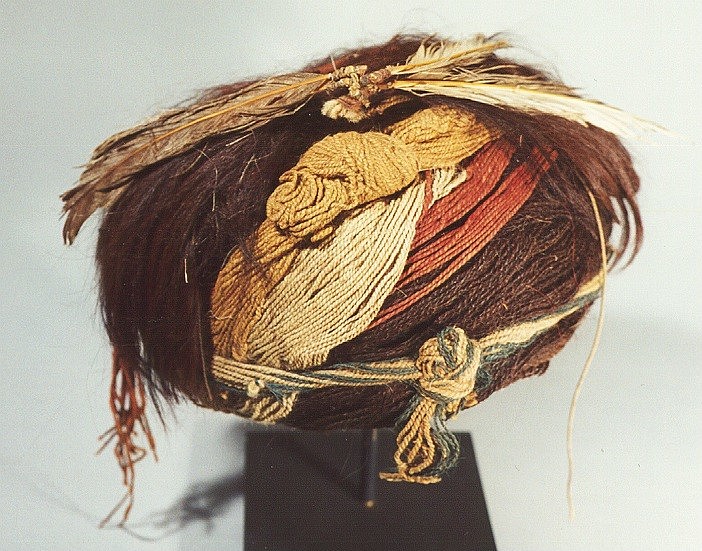
Chile, Cameronie turban with henna colored hair with upright fiber tassel
Cameronie is a coastal fishing center inhabited as early as 900 B.C. and occupied until 1100 A.D.. The turbans were made prior to the acceptance of weaving. Much importance was placed on head-gear in Chile.
Period: Cameronie, Chile, c. 600 B.C.
Media: Textile
Dimensions: Approx. Diameter 8 in.
$4,250
91283B
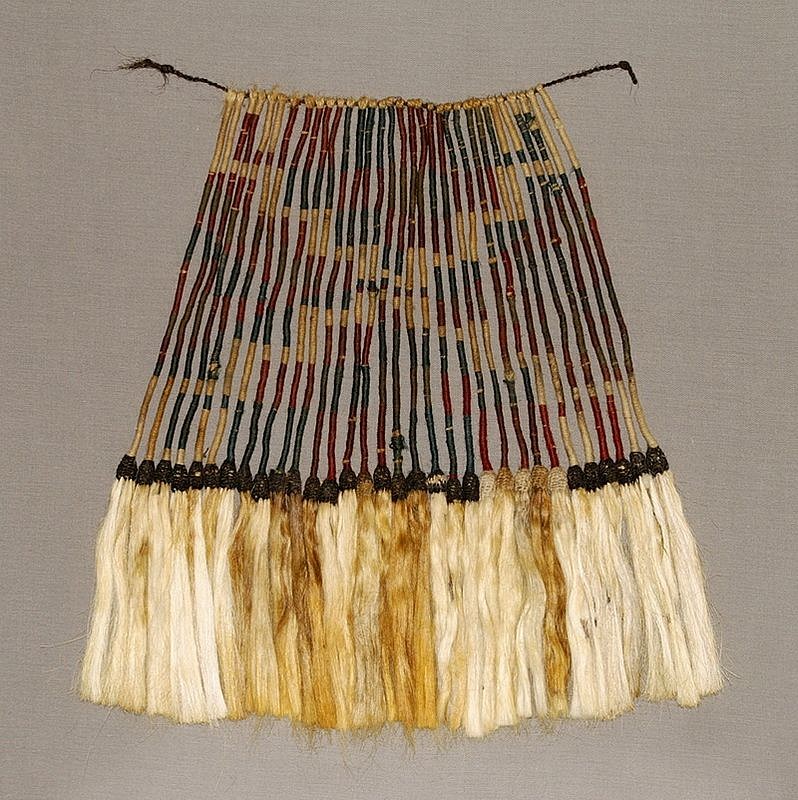




Chile, Arica Small Loincloth
The lion cloth is comprised of 32 individually wrapped strands of vicuna. The design of the Andean cross appears when the strands are aligned. A similar small mens loincloth is illustrated in Arica Diez Mil Anos, Museo Chileno (1985: 57).
Period: Chile, Arica, Inca/Late Agroceramic Period, circa AD1470-1535
Media: Textile
Dimensions: Height: 12" x Width: 14"
$6,500
M8063




Chile, Arica Chilean Fishing Kit consiting of hook, line and sinker
This kit consists of a small finely woven basket for carrying the assembled items of fishing line with hook and sinker. The line cord is spun and plied of cotton. It is unusually well made, hard-spun, with a two-strand cord. There are two straight shank fish hooks, the smaller made of copper and the larger of cactus thorn - both without barbs. The sinker is cigar shaped stone. A fine cord lashing was used to attach the sinker to the loop of heavy cord. With this system, the weight could be easily attached to or removed from the line. Similar excavated fishing material is illustrated in "Excavations in Northern Chile," Anthropological Papers of the American Museum of Natural History (1943), and also in Junius Bird, "The Cultural Sequence of the North Chilean Coast," Part 3, Southern Andes, in "Handbook of South American Indians" (1946: II: 587-597).
Period: Chile, Arica, San Miguel, Phase North Coast, circa AD1100-1200
Media: Textile
Dimensions: Length 6 1/2, width 4 1/2 and Height 4 1/2 inches
Price Upon Request
M8049
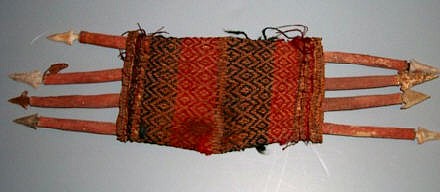
Chile, Arica harpoon quiver with harpoon points
A fiber quiver decorated in red and green reed, with its original wood harpoon points and napped points. The wood harpoon points are set into a longer throwing stick and the point releases when the harpoon is retrieved. The quiver also known as a Porta Harpoon (harpoon carrier) and holds eight points. It was used by the fisherman to hold his ammunition for an extended trip. Junius bird describes and illustrates these porta harpoons in "EXCAVATIONS IN NORTHERN CHILE", 1943 pg. 223.
Period: Chile, Arica, Formative Period, circa 1000 BC-AD300
Media: Textile
Dimensions: Length 23" from point to point x Width 7"
Price Upon Request
MM201
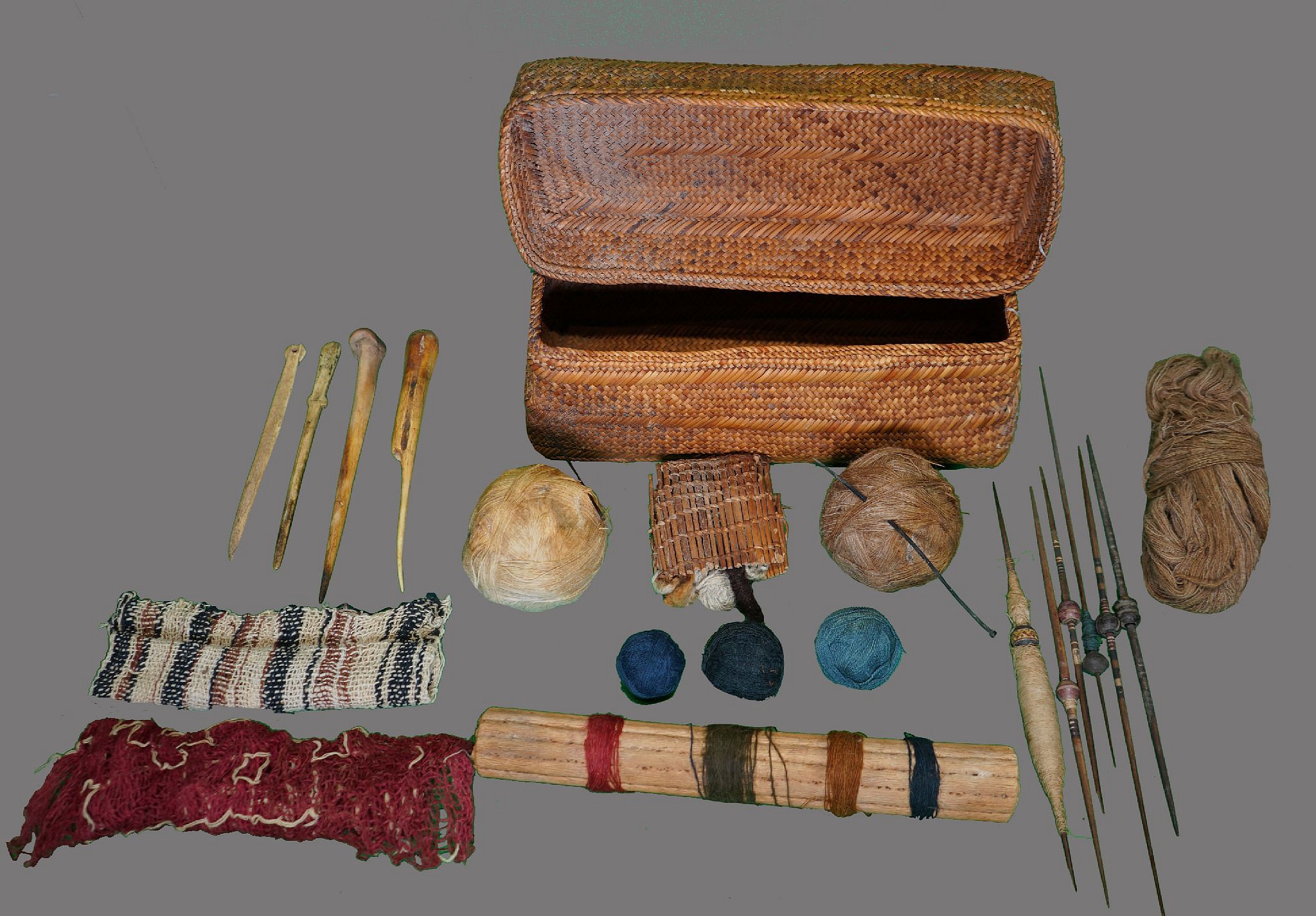
Chile, Chancay Basket with Weaving Implements
This rectangular reed basket with separate cover contains a complete ancient Peruvian weaving kit. The basket has bamboo ribs to support its shape. Based on the contents, it appears to have been used for weaving garments for Chancay dolls. The contents include: two large and three small wound balls of thread in a variety of colors, five spindle whorls, one bobbin, two thorn needles, two bone needles, a shed rod, and three small ancient woven panels. All the components are ancient and were found together in the basket.
Period: Peru, Chancay, Central Coast, c. AD 1100 - 1430
Media: Textile
Dimensions: H. 4 3/4 x L. 11 1/2 in.
Price Upon Request
91272
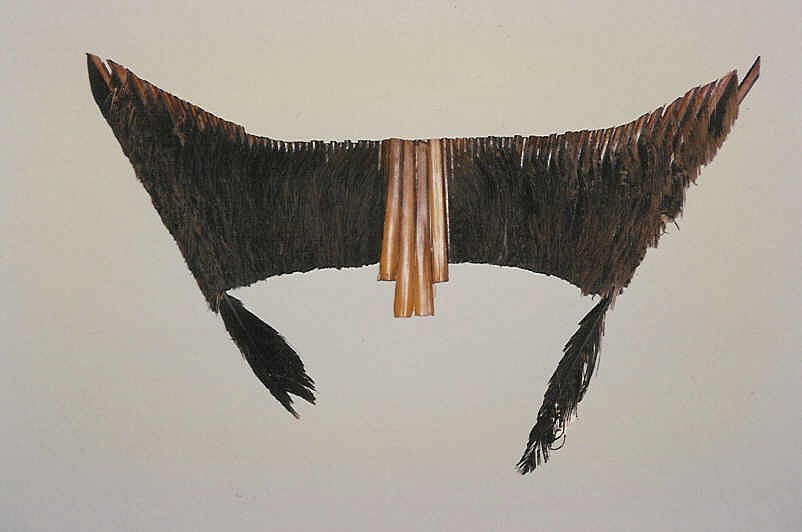


Chile, Inca feather shaman's mask with feather Nose appendages
This mask was worn by shaman to create an owl like impression. It is constructed by threading the individual duck feather quills. Figurative pottery images have been seen wearing this type of face mask. Similar masks are illustrated in ARICA 10,000 YEARS. Another example is illustrated in "Identity and Prestige in the Andes" pg 52.
Period: Chile, Late Intermediate Period, Arica North coast circa AD 1100-1200
Media: Textile
Dimensions: H 6 1/2" x W. 7"
$1,800
88033B
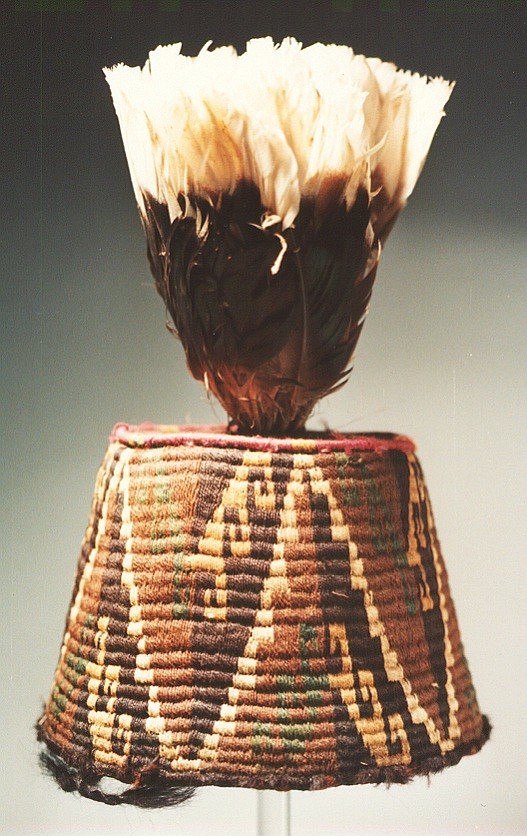
Chile, Inca Fez hat with step/scroll design in varying brown and green.
The hat has an undulating pattern of varying shades of brown. The green decoration is minimal and very subtle.
Period: Chile, Inca Pica, circa AD1470-1535
Media: Textile
Dimensions: diameter 4 1/2 in.
Price Upon Request
92229
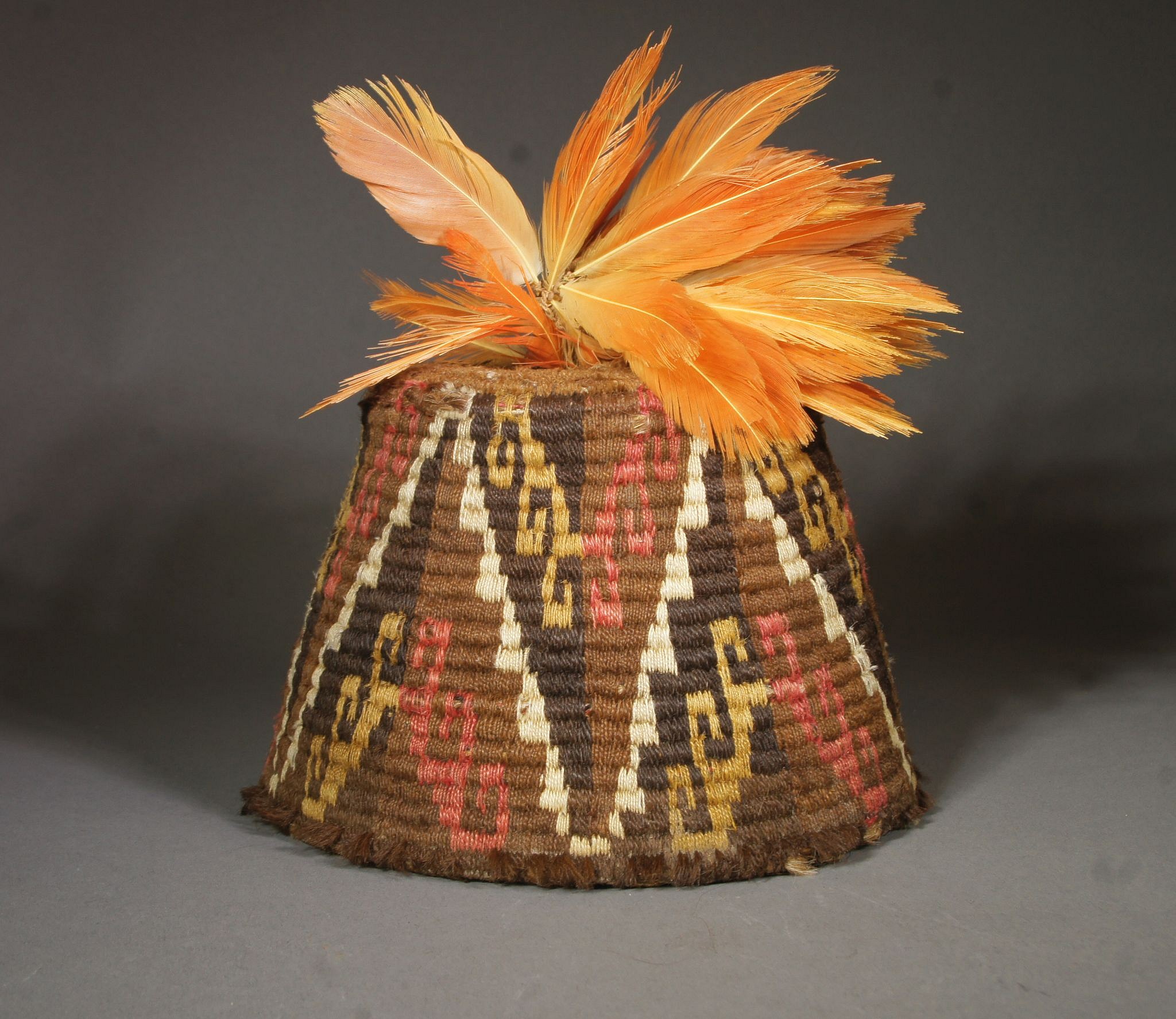



Chile, Inca fez style hat with step design in brown, gold, white and pink and feather plume
A fez style hat was placed as the final adornament on the Inca mummy bundles of Pica, Chile. They were not made anywhere else in all of the Inca Empire. They were made by a coil method wrapping different colored wool yarns around the coils to acheive the quartered step pattern. A similar example is illustrated in Arica Diez Mil Anos
Period: Chile, Inca, North Coast, Pica, c. AD 1470 - 1535
Media: Textile
Dimensions: H. 4 1/4 in.hat only H. with feathers 9"
Price Upon Request
91362
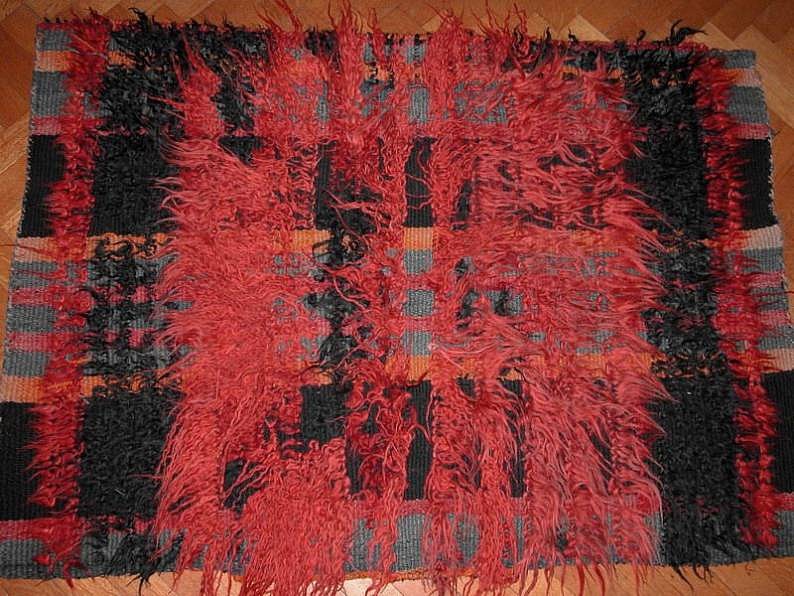



Chile, Mapuche Horse Blanket
The Mapuche Indians of southern Chile were famous for their horseback riding ability. They were the first Americans to learn how to ride horses in the New World. The slit in their tunics opened allowing them to spread their legs over the horse and these were the first true ponchos in the New World. A long pile colorful wool ceremonial horse blanket, which is very rare. A similar one is illustrated in "Colores de America" on the cover.
Period: Chile, Icalma Region, MAPUCHE, 19th Century, Villarcia
Media: Textile
Dimensions: Width 34" Height 48"
$6,500
97166
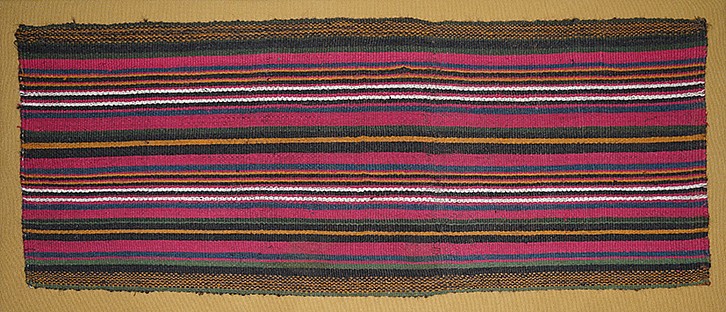



Chile, Pre-Inca Storage Bag from Arica, Chile
This large striped bag is decorated with a series of thin and broad vertical stripes in brilliant hues of red, green, tan, brown and white. The weaving was opened along the vertical sewn sides and is in excellent condition indicating that it was woven for ritual tribute rather than used in everyday life. These long, narrow bags are referred to as talegas. A group of talegas is catalogued in ARICA: 10,000 YEARS, ref # 195-199. Acquired in 1995 from Eduardo Aldunate, Santiago, Chile prior to the 1980s. Weaving Technique: plain weave. Professionally mounted on a stretcher.
Media: Textile
Dimensions: Length 29" x Width 13"
$5,800
95107











